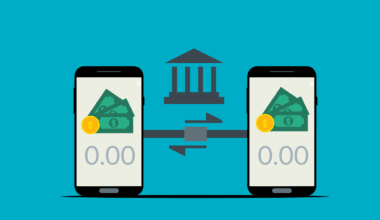Steps to Develop a Customer Journey Map for Your Business
Creating a customer journey map is essential for understanding customer experiences and interactions with your brand. Start by identifying and defining your target audience. Research your customers’ demographics, preferences, and behaviors. This crucial first step allows you to visualize their experiences. To gather insights, employ various methods like surveys, interviews, and analytics. Collect quantitative and qualitative data to create a comprehensive profile.
Next: list the stages of the customer journey. Typically, these stages include awareness, consideration, purchase, retention, and advocacy. Each stage requires attention, as they represent various touchpoints where customers interact with your business. By mapping these stages, you can identify improvement opportunities to enhance customer satisfaction.
Create a customer journey map with visual elements, such as graphs or flow charts, to illustrate the process. Visual aids help stakeholders understand the customer experience, providing clarity on how customers navigate through each stage. Ultimately, a customer journey map serves as a strategic tool, aligning your business goals with customer expectations.
After crafting your initial customer journey map, it’s essential to identify touchpoints within each stage. Touchpoints represent the interactions customers have with your brand, whether online or offline. Documenting each touchpoint aids in understanding customer experiences and emotions associated with these interactions. Moreover, evaluating customer feedback at each touchpoint is critical. Understanding customers’ thoughts and feelings will help pinpoint issues and areas for improvement. Consider using: tools like customer satisfaction surveys, interviews, or feedback forms to gather direct insights.
A successful customer journey map should also include identifying customer emotions. Understanding how a customer feels at each touchpoint leads to enhanced marketing strategies. Incorporate emotional elements to highlight sentiments, such as frustration or joy. This emotional mapping helps prioritize areas that can elevate overall satisfaction.
Next, brainstorm potential solutions to address customer pain points. Consider implementing changes, optimizations, or new features based on gathered data. Aiming to improve customer satisfaction and experience leads to enhanced loyalty, advocacy, and ultimately, higher revenue for your business.
Testing and Refining Your Customer Journey Map
Once you’ve established your customer journey map, it’s crucial to test and refine it. Gather a diverse team perspective to ensure no detail is overlooked. Collaborate with marketing, sales, and customer service departments, as insights from various functions reveal gaps and areas needing improvement. Organizing focus groups is also beneficial; it allows real customers to provide feedback on their journey through your business.
Next, analyze the data collected during testing. Pay attention to recurring themes or issues faced by customers during their interactions. For instance, if multiple customers struggle at a specific touchpoint, it may indicate an area needing immediate attention. Use this analysis to refine your customer journey map and make necessary adjustments.
Keep your map dynamic and flexible. Since customer needs and market conditions change, regularly revisiting and updating your journey map ensures its effectiveness. Create a system for ongoing feedback and review that will keep your customer journey map current and relevant, helping your business to continually improve customer experience.
Training your team on the customer journey model is crucial for successful implementation. Equip your employees with the tools and knowledge needed to understand the customer journey. Conduct workshops or training sessions where teams can learn about customer experiences and the importance of their roles at each touchpoint. One effective method is to share the customer journey map with the team, demonstrating how their work affects various stages.
Encourage collaboration: allow team members to share insights about customer interactions that may not align with the journey map. Creating a feedback loop encourages a customer-centric culture within your organization. As employees become more aware of the customer journey, they can actively contribute to tailored experiences.
Focus on finding strategies to enhance customer interactions. Encourage employees to develop their skills in communication and empathy, as these attributes are vital for understanding customers. As team members engage in the journey actively, they can embrace changes that positively impact the overall customer experience. Through training, your team will become advocates for the customer journey.
Implementing Changes Based on Your Findings
After thoroughly analyzing data from your customer journey mapping exercise, it’s time to implement changes. It’s essential to prioritize which modifications can be made swiftly and which require a longer-term strategy. Begin with low-hanging fruit, easy-to-implement changes that yield significant results. This approach can boost employee morale and increase customer satisfaction in the short term.
Next, address more systematic changes that may require a longer timeline. Seek customer feedback to ensure new implementations meet customer needs. Mapping customer expectations against your offerings is vital to aligning your business with customers’ evolving requirements. By monitoring customer reactions, databases can be updated accurately, reflecting changing preferences and trends.
Additionally, track the effectiveness of these changes over time using metrics such as Net Promoter Score (NPS) or customer retention rates. Always be prepared to iterate your maps and modify business strategies. Staying adaptable in response to customer feedback reflects a strong commitment to customer-centric service, ultimately improving customer loyalty.
Advocating for continuous improvement is key to successful customer journey mapping efforts. As you implement changes and evaluate their impact, fostering a culture of ongoing enhancement is essential. Encourage team members to share their input and experiences regarding customer interactions. Collecting feedback from employees can identify new areas for improvement that the existing customer journey map may not cover.
Establish regular review processes: schedule meetings to assess customer feedback and discuss updates to the journey map. Frequent evaluations allow your team to remain agile, responding effectively to fluctuations in customer demands. Also, instill a proactive mindset within your organization to anticipate customer needs.
Utilize the data collected to guide future innovation and adjustments to the journey map. Engage in brainstorming sessions that aim to develop new ideas to improve customer experiences. This collaboration creates solutions tailored to customer needs, thereby reinforcing loyalty. Continuous improvements show customers that your business is dedicated to enhancing their experience.
Conclusion
In conclusion, developing a customer journey map is an invaluable asset for any business aiming to improve customer experience. By following these steps, you can create an effective map that reveals valuable insights into customer interactions with your brand. Begin by understanding your audience, defining touchpoints, and analyzing customer emotions throughout their journey.
Testing and refining your map ensures that it stays relevant over time while addressing customer pain points. Training your employees to understand and advocate the customer journey fosters a collaborative culture, enhancing overall satisfaction. Implementing changes based on gathered insights reflects your company’s commitment to continuous improvement.
Remember that your customer journey map is a living document, regularly updated to maintain its effectiveness. Travel through the customer journey, keeping ahead of shifts in customer preferences. By prioritizing customer satisfaction and feedback, your business will cultivate a loyal customer base, resulting in increased sales and sustainable growth.
Lastly, the journey does not end when the map is finalized. Regularly re-evaluate and adjust your strategies based on customer feedback and market trends. Industry standards and consumer expectations will continually evolve, making it vital to keep your customer journey map current. Establish a systematic approach to gather and analyze feedback on customer satisfaction and interactions regularly. Continual learning will enable your team to implement enhancements that align with customer preferences.
Consider incorporating technology for streamlined communication and feedback processes. Leveraging customer relationship management (CRM) tools helps track touchpoints, customer satisfaction levels, and areas of opportunity. With the data collected, businesses can analyze trends and detect patterns to ensure the customer journey is respected.
To optimize, always refer back to the map when making strategic or operational changes. Rejection of assumptions and reliance on customer data is crucial for driving positive outcomes. A responsive and adaptable approach keeps your business ahead of competitors, enhancing customer experiences and ensuring ongoing loyalty in the market.


